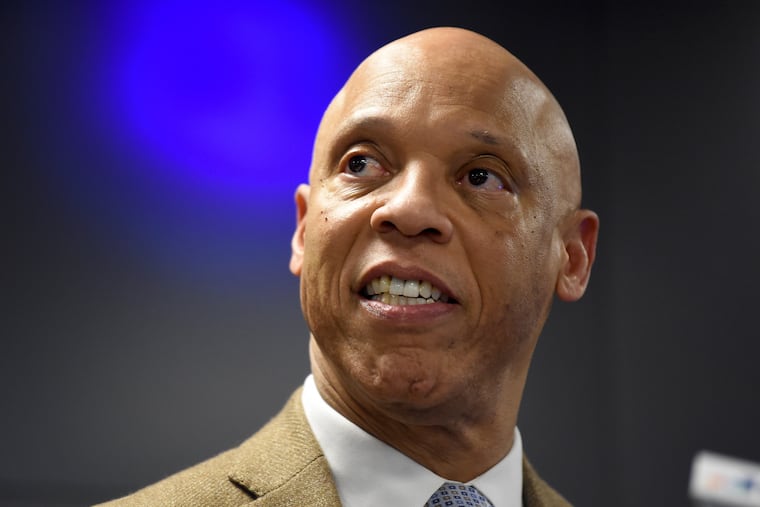Instead of hiring one new Philly school superintendent, hire several | Opinion
If the School District was broken into smaller sections, each individual leader could focus more on teaching and learning instead of politics, red tape, and the media glare.

After surveying superintendents of America’s largest school districts in 2003, the Center on Reinventing Public Education called the role of urban superintendent an “impossible job.” Yet urban districts, here and elsewhere, continue to operate with a structure that revolves around this impossible role.
After Dr. William Hite announced his upcoming departure after 10 years in Philadelphia, the Board of Education kicked off yet another search for the hero in the haystack: the school leader who finally will show that the impossible is truly possible.
Why do we keep doing this? It’s time to pursue a different path. The school board should pause its search for the next superintendent and commence a discussion about what structural and operational changes can be considered to make leadership more viable.
One path worth exploring is dividing the School District into smaller, autonomous enterprises that can be accountable to families and taxpayers. A related idea is to maintain a centralized structure for managing facilities and operations, but push authority for matters involving teaching and learning to a more local level.
The School District has 326 schools and enrolls more than 200,000 students, including charter schools. Its budget is close to $3.5 billion per year. In theory, this bigness creates efficiencies. But talk to principals, and they’ll have far more to say about the inefficiencies: the mismatches between goals and resources, the need for endless approvals, the conflicting mandates, the memo they never got. Or the repairs that were promised but somehow didn’t get done. Or the buses that don’t show up on time, if at all.
» READ MORE: Advice for Philly’s next superintendent from educators, students and parents
Then talk to families, and many will say they don’t feel heard or valued by the district. They know their teachers and perhaps their principal, but from their point of view the “system” drives nearly everything.
In the last couple of years, the School District has endeavored to create a more regionalized organizational chart. It now dedicates certain central-office staff to the assistant superintendents — who in turn lead 16 different Learning Networks. In theory this enables the Learning Networks to function more independently. Yet all of the big decisions — school budgeting, recruitment, staff work rules, scheduling, enrollment policies, and most other policies — remain under the control of the central office.
A good education always comes down to the quality of principals, teachers, and curricula. Giving schools or regions true autonomy to make the biggest decisions wouldn’t by itself lead to higher student achievement or greater family engagement. But it would make the superintendent job less enormous and futile. Assistant superintendents would in effect become more like superintendents, with chief executive responsibility for their networks. With more superintendents (and perhaps more boards of education), families would have greater ability to observe decision-making and make their voices heard.
Likely not all of these autonomous superintendents would succeed — but with each managing a smaller enterprise, the stakes would be lower and they could focus more on teaching and learning instead of politics, red tape, and the media glare.
Dividing the School District into smaller parts may sound radical. On the one hand, radical is what we need. How else will we alter what many stakeholders say is a structurally ineffective and inequitable institution? On the other hand, the district already has a regional structure — at least in theory. Now the question is how can it authentically distribute leadership and accountability?
The challenge is to move beyond structure to empowerment. Some of the biggest success stories in urban education in the last 10 years have come from district restructuring efforts that pushed authority for core decisions into smaller, community-aligned networks. Empower Schools, a Massachusetts-based nonprofit that has been involved in several of those efforts, puts it like this: “Students and communities thrive when those closest to students are empowered to make decisions.”
It’s time to pause and reconsider how we are managing our public schools. What can we do to make effective management possible? How can we increase the odds of success?
These are questions we might respond to in a variety of ways. Keeping the job the way it always has been, however, is not an answer.
Mark Gleason is a partner in the Drexel Fund, a national education nonprofit, and a founder of a new local advocacy group A Greater Philadelphia. He is the former executive director of the Philadelphia School Partnership. mark@greaterphila.org.